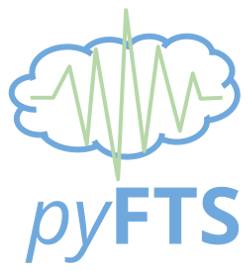"""
Common facilities for pyFTS
"""
import time
import matplotlib.pyplot as plt
import dill
import numpy as np
[docs]def plot_rules(model, size=[5, 5], axis=None, rules_by_axis=None, columns=1):
if axis is None and rules_by_axis is None:
rows = 1
elif axis is None and rules_by_axis is not None:
rows = (((len(model.flrgs.keys())//rules_by_axis)) // columns)+1
fig, axis = plt.subplots(nrows=rows, ncols=columns, figsize=size)
if rules_by_axis is None:
draw_sets_on_axis(axis, model, size)
_lhs = model.partitioner.ordered_sets if not model.is_high_order else model.flrgs.keys()
for ct, key in enumerate(_lhs):
xticks = []
xtickslabels = []
if rules_by_axis is None:
ax = axis
else:
colcount = (ct // rules_by_axis) % columns
rowcount = (ct // rules_by_axis) // columns
if rows > 1 and columns > 1:
ax = axis[rowcount, colcount]
elif columns > 1:
ax = axis[rowcount]
else:
ax = axis
if ct % rules_by_axis == 0:
draw_sets_on_axis(ax, model, size)
if not model.is_high_order:
if key in model.flrgs:
x = (ct % rules_by_axis) + 1
flrg = model.flrgs[key]
y = model.sets[key].centroid
ax.plot([x],[y],'o')
xticks.append(x)
xtickslabels.append(key)
for rhs in flrg.RHS:
dest = model.sets[rhs].centroid
ax.arrow(x+.1, y, 0.8, dest - y, #length_includes_head=True,
head_width=0.1, head_length=0.1, shape='full', overhang=0,
fc='k', ec='k')
else:
flrg = model.flrgs[key]
x = (ct%rules_by_axis)*model.order + 1
for ct2, lhs in enumerate(flrg.LHS):
y = model.sets[lhs].centroid
ax.plot([x+ct2], [y], 'o')
xticks.append(x+ct2)
xtickslabels.append(lhs)
for ct2 in range(1, model.order):
fs1 = flrg.LHS[ct2-1]
fs2 = flrg.LHS[ct2]
y = model.sets[fs1].centroid
dest = model.sets[fs2].centroid
ax.plot([x+ct2-1,x+ct2], [y,dest],'-')
y = model.sets[flrg.LHS[-1]].centroid
for rhs in flrg.RHS:
dest = model.sets[rhs].centroid
ax.arrow(x + model.order -1 + .1, y, 0.8, dest - y, # length_includes_head=True,
head_width=0.1, head_length=0.1, shape='full', overhang=0,
fc='k', ec='k')
ax.set_xticks(xticks)
ax.set_xticklabels(xtickslabels)
ax.set_xlim([0,rules_by_axis*model.order+1])
plt.tight_layout()
plt.show()
[docs]def draw_sets_on_axis(axis, model, size):
if axis is None:
fig, axis = plt.subplots(nrows=1, ncols=1, figsize=size)
for ct, key in enumerate(model.partitioner.ordered_sets):
fs = model.sets[key]
axis.plot([0, 1, 0], fs.parameters, label=fs.name)
axis.axhline(fs.centroid, c="lightgray", alpha=0.5)
axis.set_xlim([0, len(model.partitioner.ordered_sets)])
axis.set_xticks(range(0, len(model.partitioner.ordered_sets)))
tmp = ['']
tmp.extend(model.partitioner.ordered_sets)
axis.set_xticklabels(tmp)
axis.set_ylim([model.partitioner.min, model.partitioner.max])
axis.set_yticks([model.sets[k].centroid for k in model.partitioner.ordered_sets])
axis.set_yticklabels([str(round(model.sets[k].centroid, 1)) + " - " + k
for k in model.partitioner.ordered_sets])
current_milli_time = lambda: int(round(time.time() * 1000))
[docs]def uniquefilename(name):
if '.' in name:
tmp = name.split('.')
return tmp[0] + str(current_milli_time()) + '.' + tmp[1]
else:
return name + str(current_milli_time())
[docs]def show_and_save_image(fig, file, flag, lgd=None):
"""
Show and image and save on file
:param fig: Matplotlib Figure object
:param file: filename to save the picture
:param flag: if True the image will be saved
:param lgd: legend
"""
plt.show()
if flag:
if lgd is not None:
fig.savefig(file, additional_artists=lgd,bbox_inches='tight') #bbox_extra_artists=(lgd,), )
else:
fig.savefig(file)
plt.close(fig)
[docs]def enumerate2(xs, start=0, step=1):
for x in xs:
yield (start, x)
start += step
[docs]def sliding_window(data, windowsize, train=0.8, inc=0.1, **kwargs):
"""
Sliding window method of cross validation for time series
:param data: the entire dataset
:param windowsize: window size
:param train: percentual of the window size will be used for training the models
:param inc: percentual of data used for slide the window
:return: window count, training set, test set
"""
l = len(data)
ttrain = int(round(windowsize * train, 0))
ic = int(round(windowsize * inc, 0))
progressbar = kwargs.get('progress', None)
rng = np.arange(0,l-windowsize+ic,ic)
if progressbar:
from tqdm import tqdm
rng = tqdm(rng)
for count in rng:
if count + windowsize > l:
_end = l
else:
_end = count + windowsize
yield (count, data[count : count + ttrain], data[count + ttrain : _end] )
[docs]def persist_obj(obj, file):
"""
Persist an object on filesystem. This function depends on Dill package
:param obj: object on memory
:param file: file name to store the object
"""
try:
with open(file, 'wb') as _file:
dill.dump(obj, _file)
except Exception as ex:
print("File {} could not be saved due exception {}".format(file, ex))
[docs]def load_obj(file):
"""
Load to memory an object stored filesystem. This function depends on Dill package
:param file: file name where the object is stored
:return: object
"""
with open(file, 'rb') as _file:
obj = dill.load(_file)
return obj
[docs]def persist_env(file):
"""
Persist an entire environment on file. This function depends on Dill package
:param file: file name to store the environment
"""
dill.dump_session(file)
[docs]def load_env(file):
dill.load_session(file)
